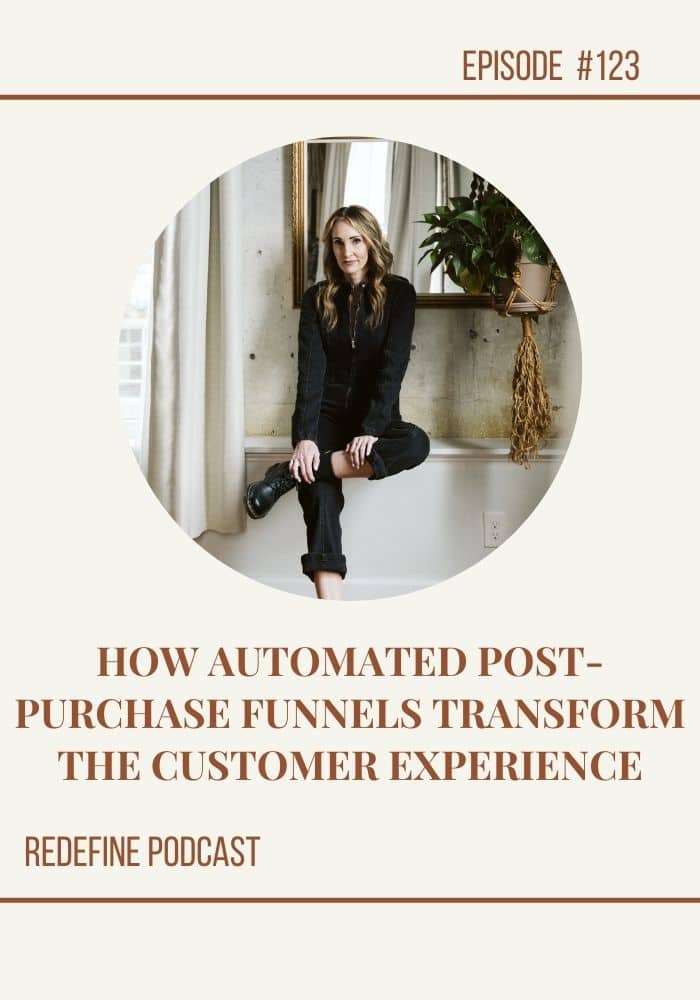
How Automated Post-Purchase Funnels Transform the Customer Experience
In today’s competitive market, businesses must focus not only on getting new customers but also on retaining them and ensuring customer satisfaction. One of the most effective ways to achieve this is through automated post-purchase funnels. These funnels help streamline the customer journey after a purchase, creating loyalty, encouraging repeat purchases, and ultimately driving growth. In this podcast, we’ll discuss how automated post-purchase funnels transform the customer experience and drive growth.
Understanding Automated Post-Purchase Funnels
An automated post-purchase funnel is a series of automated actions and communications triggered after a customer makes a purchase. Poor or little communication after a purchase can be problematic and be the cause of a negative client experience. The goal is to nurture the customer relationship, educate, enhance their experience, and guide them toward further engagement with the brand. These funnels can include a variety of touchpoints, such as emails, SMS, social media interactions, and personalized offers.
Benefits of Automated Post-Purchase Funnels
- Enhanced Customer Experience:
- Automated post-purchase funnels ensure customers feel valued and supported after their purchase. Timely follow-ups, personalized recommendations, and proactive customer service contribute to a positive experience, increasing the likelihood of repeat business.
- Increased Customer Retention:
- By maintaining regular contact and providing relevant content, businesses can keep their brand top-of-mind. Engaged customers are more likely to return for future purchases, leading to higher retention rates.
- Boosted Lifetime Value:
- Satisfied customers tend to spend more over time. Automated funnels can upsell and cross-sell products, recommend products or services, and offer exclusive deals, thereby increasing the average customer lifetime value (CLV).
- Additional Time in Your Day:
- Automation reduces the need for manual actions, freeing up resources and time that can be used for other areas in your business. This efficiency allows businesses to scale their operations without compromising on quality.
- Actionable Insights:
- Automated funnels provide valuable data on customer behavior and preferences. Analyzing this data helps businesses refine their marketing strategies, optimize their product offerings, and tailor their communications to better meet customer needs.
Key Components of an Effective Post-Purchase Funnel
Every business’s post-purchase funnel is going to look a little bit different, depending on the service or product. These components are suggestions, but aren’t always required. When building your post-purchase funnels, be mindful to not overwhelm your clients. If you have an actionable task for them to complete, consider breaking the information up into several different emails. If possible, limit your emails to one call to action (CTA) per email.
- Order Confirmation and Thank-You Messages:
- Immediately after a purchase, send an order confirmation email or message. This should include details of the purchase, expected deliverables, and a thank-you note. This reassures the client that their order was completed and sets the tone for a positive
post-purchase experience.
- Immediately after a purchase, send an order confirmation email or message. This should include details of the purchase, expected deliverables, and a thank-you note. This reassures the client that their order was completed and sets the tone for a positive
- Intake and/or Contract:
- Depending on the workflow of your business, the next email could include an intake form requesting detailed information. If a contract is required and wasn’t signed pre-purchase, this communication could include a contract.
- Educate and Instruction
- This portion of the funnel is an opportunity to educate or give your clients instruction. For example, if you’re a photographer, you could educate your clients on what to wear or how to plan for a photoshoot. If you’re a coach, this is a good time to let them know how to schedule coaching calls and how the program will proceed.
- Tips and Guides:
- Help clients get the most out of their purchase by providing tips, how-to guides, or instructional videos. This not only enhances their experience, but it also reduces the likelihood of clients feeling disappointed with the value.
- Follow-Up and Feedback Requests:
- After the service has been completed, follow up to ensure the customer is satisfied with their purchase. Encourage them to leave a review or provide feedback. Positive reviews can be showcased to attract new clients, while constructive feedback helps improve products and services.
- Upsell:
- Use the client’s purchase history to suggest related or complementary products. Personalized recommendations make customers feel understood and increase the chances of additional sales.
- Loyalty Programs and Exclusive Offers:
- Reward loyal customers with exclusive offers, discounts, or access to a loyalty program. These incentives encourage repeat purchases and foster long-term loyalty.
- Regular Engagement:
- Maintain ongoing communication through newsletters, blog updates, or social media interactions. Share relevant content, upcoming product launches, or special events to keep customers engaged and connected with the brand.
Strategies for Implementing Automated Post-Purchase Funnels
Oftentimes the technology and implementation is a major obstacle for businesses. Investing time or money into implementing funnels will have a huge return on investment and will have a long-term payoff. Here are few strategies to implement:- Segment Your Audience:
- Different customers have different needs and preferences. Segment your audience based on factors such as purchase history, demographics, and engagement levels to tailor your post-purchase communications effectively.
- Leverage Technology:
- Utilize marketing automation platforms to set up and manage your post-purchase funnels. Tools like Kajabi, Flodesk, and Zapier offer features for creating automated workflows, tracking customer interactions, and analyzing performance.
- Personalize Communications:
- Personalization is key to a successful post-purchase strategy. Use customer data to personalize emails, messages, and offers. Address customers by their names, and reference their specific purchases to create a more engaging experience.
- Test and Optimize:
- Continuously test different elements of your post-purchase funnels, such as email subject lines, messaging, and timing. Analyze the results, and optimize your approach based on what works best for your audience.
- Focus on Customer Feedback:
- Actively seek customer feedback and use it to improve your products, services, and post-purchase processes. Showing that you value customer input can enhance loyalty and trust.
- Integrate With CRM Systems:
- Integrate your post-purchase automation with your customer relationship management (CRM) system. This ensures a seamless flow of information and allows for more personalized and effective communications.
Automated post-purchase funnels are a powerful tool for enhancing customer experience, increasing retention, and driving growth. By strategically implementing these funnels, businesses can nurture their customer relationships, boost lifetime value, and gain a competitive edge in the market. The key lies in understanding your customers, leveraging technology, and continuously refining your approach based on data and feedback. Incorporate these practices into your business operations, and watch as your customer loyalty and revenue soar to new heights.
Grab my High Converting Sales Funnels Guide and start funneling!
Resources:
The Meeting Place Membership
Rock The Reels
1:1 Coaching
Free Client Welcome Guide
Additional Trainings and Resources
Connect with Brittni:
Follow me on the Gram – @brittni.schroeder
Join my Facebook Group
Visit my website
Subscribe to my Youtube








